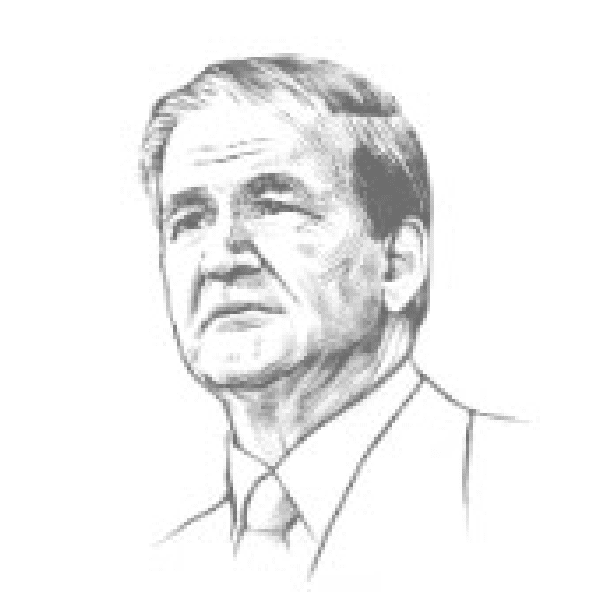Après Alan, Le Deluge?
He had presided over the greatest prosperity in U.S. history when Calvin Coolidge announced from the Black Hills of South Dakota, “I do not choose to run for president in 1928.”
In March 1929, Coolidge turned the presidency over to Herbert Hoover, the commerce secretary he derided as “The Wonder Boy.” Six months later came the Wall Street crash and Great Depression with which Hoover’s name is forever associated.
Coolidge was enjoying retirement.
Is Alan Greenspan the Calvin Coolidge of our time? Is Ben Bernanke, his successor as chairman of the Federal Reserve, fated to inherit a monetary crisis that Greenspan’s policies have assured? So some pessimists believe.
At his retirement after 18 years, Greenspan is being hailed as the greatest central banker of his time. He saw us through the crash of ’87, the fears of Y2K, the stock market collapse of 2000-2002. Only two recessions, neither deep, marred a tenure that coincided with two of the most prosperous decades in U.S. history.
Why, then, is the praise for Alan Greenspan not universal?
Dissenters say our prosperity is hollow. While the economy appears healthy, a disease is eating away inside, a disease that Dr. Greenspan has been treating with oxycontin. The chairman, they say, was a friend to presidents and kept them happy and himself in power by the greatest expansion of money and credit in history. And just as the easy-money Fed policies of the Hoover-Coolidge era led to the crash of ’29, a day of reckoning is ahead.
“If Greenspan is popular,” writes John Cassidy of The New Yorker, “it is because he has made many middle-class home-owners millionaires, at least on paper.”
“But the economy is chronically unbalanced. Like an athlete on steroids, it is ailing from the inside. The United States has a negative personal savings rate; an immense budget shortfall, which will expand as the baby boomers retire; a trade deficit greater than Russia’s gross domestic product. As a country we are living far beyond our means. Every working day, we borrow more than three billion dollars from foreigners, notably the central banks of China and other Asian nations, in order to pay our import bills and keep our interest rates low.”
On its cover, The Economist portrays Greenspan as a desperate relay runner racing to hand the baton to Bernanke. Only the baton is a lighted stick of dynamite. The magazine contends that Greenspan is “leaving behind the biggest economic imbalances in American history.” Among the worst of these imbalances is a trade deficit that will come in at $760 billion, or 6 percent of GDP. Some $200 billion of that trade deficit is with China alone.
How do we pay for all those foreign goods? Through what one economist calls “vendor financing.” Writes Cassidy, “The Chinese lend us cash; we buy their goods”—like the college kid whose binge drinking is put on a tab by his bartender until the terrible settling of accounts at the end of the term.
As Chinese goods come to us, our technology, factories, and industrial jobs go to them. As China talks of exporting a $10,000 sedan to the United States, Ford joins GM in slashing 30,000 jobs, as the last two great American automakers, loaded down with “legacy costs” from the health and pensions plans of the great years gone by, fight to keep their creditors away from the door.
Gold has doubled in price under Bush to $550 an ounce, a sign of sinking confidence in a currency. In late January, the Commerce Department reported the U.S. savings rate had fallen to the lowest levels since 1932 and 1933, the last years of Hoover, when folks had to spend their savings to survive. In the fourth quarter of 2005, U.S. consumers did not save a dime. They spent all they earned and more. Household debt, corporate debt, foreign debt are at records.
A primary source of consumer cash has come from refinancing homes. But the seemingly inexorable rise in housing prices has now stalled. A glut is appearing in some housing markets. That reliable source of spendable cash could dry up.
While the nation’s economic growth was 3.5 percent last year, that was below the best year of the Bush recovery, 2004, when growth reached 4.2 percent. More ominously, in the fourth quarter of 2005, U.S. economic growth fell to 1.2 percent, the worst quarter since 2002, before the recovery began. If we are approaching the end of boom times on borrowed money, Ben Bernanke may be left holding the bag.
More likely, our media elites will, as they did to the hapless Hoover, lay it all at the door of the White House. If the economy is going into the dumpster, George W. Bush will take the hit in the history books—while his party takes the hit this November.

Comments